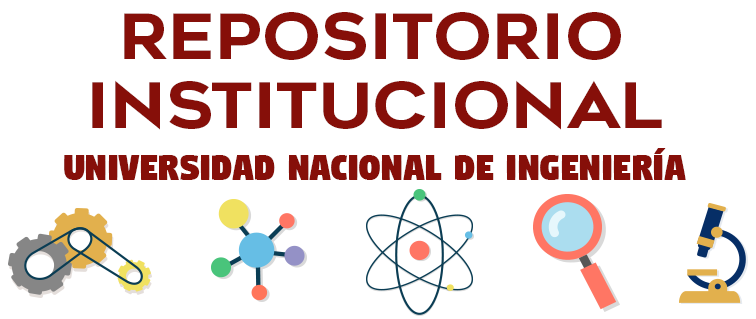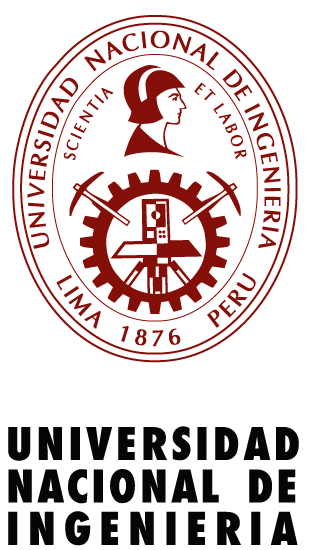Please use this identifier to cite or link to this item:
http://hdl.handle.net/20.500.14076/27955| Title: | Diseño y construcción virtual para reducir la variabilidad en el suministro de acero dimensionado en un proyecto de edificación multifamiliar |
| Authors: | Pintado Chumpitaz, José Antonio |
| Advisors: | Colonio García, Luis Alfredo |
| Keywords: | Proyectos de construcción;Acero estructural;Simulación por ordenador;Materiales de construcción;VDC;Virtual design and construction |
| Issue Date: | 2024 |
| Publisher: | Universidad Nacional de Ingeniería |
| Abstract: | El acero de refuerzo es uno de los insumos más importantes en la partida del casco estructural de una edificación de concreto armado. Asimismo, el uso de acero dimensionado ha mostrado beneficios a las obras debido al ahorro de merma y menor personal en campo necesario, además del aseguramiento de la calidad de los materiales y la mayor productividad en la ejecución de las actividades. Sin embargo, este servicio y producto útil para las obras está sujeto a variabilidad ya que depende de la interacción y entregables de los diferentes involucrados en el proceso, siendo requerida una mejor manera de gestionar los proyectos. Por otra parte, la gestión de la construcción ha generado nuevas formas de gestionar los proyectos con la finalidad de lograr los objetivos del proyecto y cliente en la ejecución global del mismo, siendo ya un deber incluir también a los proveedores a esta forma de trabajo.
Esta investigación mediante la aplicación de la metodología de Gestión de Proyectos: Virtual Design and Construction (Diseño y Construcción Virtual) permitirá plantear un marco de trabajo e indicadores a un proyecto de edificación multifamiliar con la finalidad de reducir las fuentes de variabilidad y optimizar el flujo de trabajo asegurando el suministro a tiempo, dejando las bases para su aplicación en otros tipos de proyectos de construcción y con diferente tipo de proveedores a fin de lograr una cadena de producción confiable y la mejora de la industria de la Construcción. Por ello, se plantearon en el trabajo de tesis los siguientes seis capítulos, detallados a continuación:
En el Capítulo I y II , se describen los antecedentes importantes y base teórica referente al uso de acero dimensionado, variabilidad, buffers así como la metodología VDC, su definición, componentes, aplicación y beneficios en los proyectos de construcción.
En el Capítulo III, se identificaron las fuentes de variabilidad y se describe el proceso para el servicio de acero dimensionado en un proyecto de edificación multifamiliar previo a la implementación de la metodología VDC. Se realizó un estudio exploratorio con personal responsable de la atención de acero dimensionado a diferentes proyectos de edificación multifamiliar, a los cuales se asignaron como expertos en base a su experiencia. Con la aplicación de entrevistas y encuestas se detectaron las principales fuentes de variabilidad que afectan sus proyectos, logrando así identificar su nivel de impacto y frecuencia mediante una matriz de riesgos.
En el Capítulo IV, se plantea el marco de implementación de la metodología VDC propuesto junto con el equipo del proyecto y la etapa para la aplicación. Se define cada componente (BIM, ICE, PPM) y su importancia. Asimismo, se definen las métricas que permiten llevar un control del estatus del proyecto con la finalidad de tomar decisiones en base a ellas, para así asegurar el objetivo del proyecto y cliente.
En el Capítulo V, se describe el proceso optimizado para el servicio de acero dimensionado en un proyecto de edificación multifamiliar, tomando en cuenta las fuentes que producen variabilidad en el proceso y asignando los buffers que disminuyan sus posibles impactos.
En el Capítulo VI, se interpretan los resultados durante las 28 semanas de implementación de la metodología VDC, logrando así acercarse a los valores planteados como meta al inicio de la implementación. Asimismo, se evaluó por los mismos expertos del capítulo III el impacto y frecuencia de las fuentes de variabilidad para el flujo optimizado. Reinforcing rebar is one of the most important inputs in the departure of the structural shell of a reinforced concrete building. Likewise, the use of dimensioned rebar has shown benefits to the works due to the reduction of waste and less necessary personnel in the field, in addition to the assurance of the quality of the materials and the greater productivity in the execution of the activities. However, this useful service and product for the works is bound by variability since it depends on the interaction and deliverables of the different parties involved in the process, and for this a better way of managing the projects is required. On the other hand, construction management has generated new ways of managing projects in order to achieve the objectives of the project and client in its overall execution, and it is now a duty to also include suppliers in this way of working. This research, through the application of the Virtual Design and Construction Project Management methodology, will make it possible to propose a framework and indicators for a multi-family building project in order to reduce the sources of variability and ensure supply on time, leaving the bases for its application in other types of construction projects and with different types of suppliers in order to achieve a reliable production chain and improve the Construction industry. For this reason, the following six chapters detailed below were raised in the thesis work: In Chapter I and II, the important background and theoretical basis regarding the use of dimensioned rebar, variability and buffers are described, as well as the VDC methodology, its definition and components, application and benefits in construction projects. In Chapter III, the sources of variability were identified and the process for the service of dimensioned rebar is described for a multi-family building project prior to implementation. An exploratory study was carried out with personnel responsible for the provision of dimensioned rebar to different multi-family building projects, who were assigned as experts based on their experience. With the application of interviews and surveys, the main sources of variability that affect them were detected, thus managing to identify their level of impact and frequency through a risk matrix. In Chapter IV, the implementation framework of the proposed VDC methodology, made together with the project team, and the stage for the application is presented. Each component (BIM, ICE, PPM) and its importance are defined. Likewise, the metrics that allow to keep track of the status of the project are defined in order to make decisions based on them, and to ensure the client and project objectives. In Chapter V, the optimized process for the dimensioned rebar service in a multi-family building project is described, taking into account the sources that produce variability in the process and assigning the buffers that reduce their possible impacts. In Chapter VI, the results are interpreted during the 28 weeks of implementation of the VDC methodology, managing to approach the values set as a goal at the beginning of the implementation. Likewise, the impact and frequency of the sources of variability for the optimized flow were evaluated by the same experts from Chapter III. |
| URI: | http://hdl.handle.net/20.500.14076/27955 |
| Rights: | info:eu-repo/semantics/openAccess |
| Appears in Collections: | Ingeniería Civil |
Files in This Item:
| File | Description | Size | Format | |
|---|---|---|---|---|
| pintado_cj.pdf | 13,28 MB | Adobe PDF | View/Open | |
| pintado_cj(acta).pdf | 916,73 kB | Adobe PDF | View/Open | |
| carta_de_autorización.pdf | 666,4 kB | Adobe PDF | View/Open | |
| informe_de_similitud.pdf | 1,38 MB | Adobe PDF | View/Open |
This item is licensed under a Creative Commons License

Indexado por:



